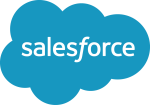
So, you’ve changed up your business model thanks to COVID-19. You’ve switched your offerings to respond to novel demands, upended your finances, restructured your team or taken to the digital realm in a way you never had before.
But how do you effectively communicate these changes to your customers to retain their business while simultaneously attracting new customers?
SmartCompany startups and tech editor Stephanie Palmer-Derrien spoke with a panel of industry experts about how they’ve marketed their business’s shifts in 2020.
Enhance your digital communication
Like all bricks-and-mortar businesses, high-end designer furniture and lighting retailer Living Edge had to find ways to communicate with both B2C and B2B customers once all its operations went online and its staff relocated to work remotely.
Ensuring sales staff could take orders over the phone, as demand for home office furniture boomed, and diligently updating the company’s Salesforce CRM were imperative for a seamless transition, says chief financial officer James Morton.
“The biggest success we had was migrating to taking orders over the phone within 48 hours,” says Morton.
“Every day our sales teams would do a follow-up conversation over Zoom. We’d just launched our Salesforce CRM, so [there was] a real focus on making sure that all of our leads and opportunities were in the Salesforce CRM.”
In an effort to recreate an in-store experience for the surge in web visitors, the company also began to refresh its home page weekly to circulate fresh content. Project-based online wishlists were introduced for customers that the sales team could review and then offer personalised suggestions.
Another key digital tool was the introduction of live chat. Initially, Morton says the team was reluctant, believing it wasn’t a good fit for their clientele, but have happily been proven wrong as customers embraced it so enthusiastically that it is now a solid sales funnel.
“Something like on average of 10% to 20% of our online revenue is coming through live chat,” he says.
“And it makes sense, because people are online… they’ve got some queries.”
Ramp up your public relations campaign
A bootstrapped, yet highly targeted public relations campaign helped entrepreneur Mel How leverage the public’s newfound enthusiasm for at-home cocktail mixing kits produced by her company, The Cocktail Shop.
Ironically, How intended to fold the company pre-COVID-19 due to sluggish demand and re-launch her marketing firm, Marketing Wise.
She pivoted The Cocktail Shop’s business focus from solely a consumer subscription basis to include a corporate market for Friday drinks, virtual client events and gifts, and by doing so increased sales by 300%.
“I had amazing SEO around my business, and my online presence was already there,” she says. “So what I did was I focused on PR, and I put all of my resources and energy into PR, and that seemed to really work in both senses actually, both with B2B and with B2C.”
How recognised the symbiotic word of mouth marketing relationship between consumer and corporate, and used her PR campaign to breathe life into both.
“These things get suggested like, ‘Why don’t we do cocktail kits for our customers this Christmas?’,” she says. “They come from individuals that often see these things outside of their work environment.
“So demand happens in the consumer space, and then it gets brought into the corporate space, into the B2B space.”
Use your CRM data to be targeted and personalised
As the delivery of school went online, more regular and personalised communication was key to cutting through the digital ‘noise’ of the pandemic, says Laura Marinesco, head of sales with ed-tech startup Maths Pathway.
The company introduced a “rigorous calendar of communication” with weekly support emails and researched a suite of resources to show clients how to integrate Google Hangouts, Microsoft Teams and Zoom into the teaching process.
To keep attracting new schools, significant effort was allocated to personalising sales pitches. Marinesco says the team used Salesforce to be strategic.
“So looking at segmentation in a way that you could collect data from a geographical perspective, and then look at for instance, the type of school — whether they were Catholic, independent schools, government schools, and collect all of that, and really personalise the message,” she says.
“So presenting a customer with a case study that was of a similar school, with a similar background, that were doing really well in mathematics.
So really saying, ‘Hey, here’s someone that looks like you, that would have similar challenges to the ones that you are facing, and we would love to have a conversation and see if we can help you as well.’”
Changing your operating model to adapt to the dramatic changes wrought by the pandemic is definitely the ‘new normal’ for business in Australia. But, with a solid marketing strategy and expert tips like the ones above, it’s possible to bring your customers along on your journey and successfully continue to build your clientele.
NOW READ: What’s in your Marketing Toolkit?

Salesforce, the global leader in customer relationship management (CRM), empowers companies to connect with their customers in a whole new way.


COMMENTS
Reader comments have been turned off on this post.